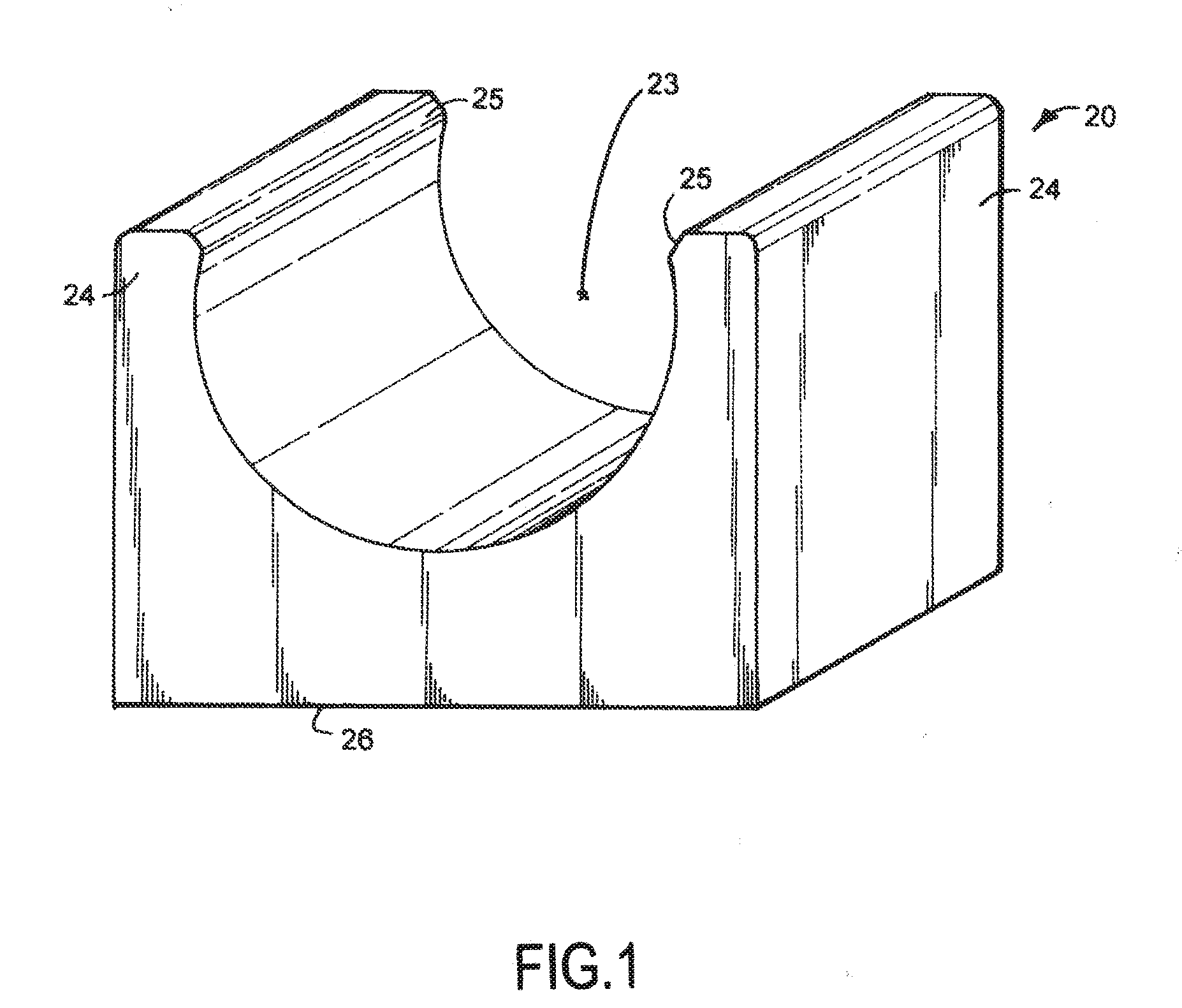Foam support for line pipe
- Summary
- Abstract
- Description
- Claims
- Application Information
AI Technical Summary
Benefits of technology
Problems solved by technology
Method used
Image
Examples
Embodiment Construction
[0030]A series of contoured pipe supports 20 (FIGS. 1-4) made primarily of foam are designed to support line pipe 21 across land or water. Line pipes 21 are commonly made by welding together pipe sections 22, such that the line pipe 21 extends for miles. The supports 20 are configured to snap onto and self-retain to the line pipe 21, are configured to rotate and / or slide to a use position on the pipe 21, and further are configured to resist permanent deformation and to withstand weather conditions. The foam of the supports 20 have sufficient physical and mechanical properties to support the line pipe 21, but the supports 20 are surprisingly lightweight and can be easily installed over pipes 21 for the purpose of supporting and protecting such pipe until the pipe is buried or submerged in the earth. The supports 20 are also sufficiently durable and have sufficient flotation properties to maintain a line pipe 21 in a horizontal position necessary to prevent accidental puncture or leak...
PUM
 Login to View More
Login to View More Abstract
Description
Claims
Application Information
 Login to View More
Login to View More - Generate Ideas
- Intellectual Property
- Life Sciences
- Materials
- Tech Scout
- Unparalleled Data Quality
- Higher Quality Content
- 60% Fewer Hallucinations
Browse by: Latest US Patents, China's latest patents, Technical Efficacy Thesaurus, Application Domain, Technology Topic, Popular Technical Reports.
© 2025 PatSnap. All rights reserved.Legal|Privacy policy|Modern Slavery Act Transparency Statement|Sitemap|About US| Contact US: help@patsnap.com



